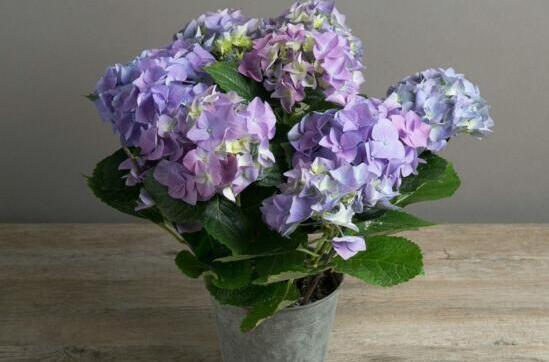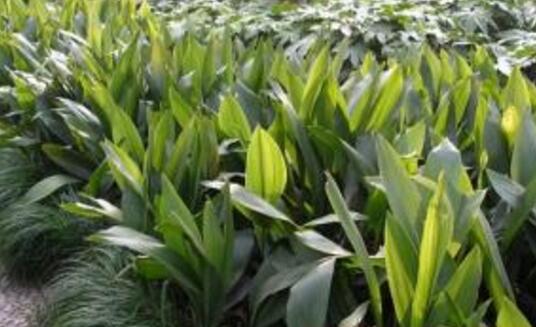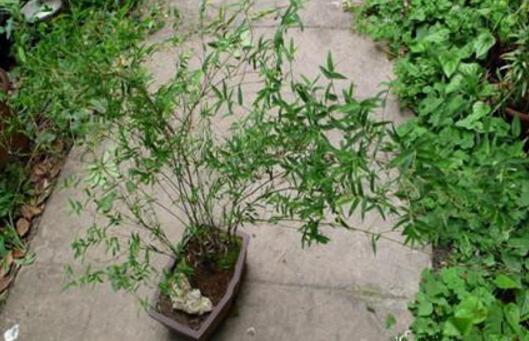What to do when hydrangea wilts? Increasing water, proper shade/environmental mutation is the main cause.
Hydrangea, as its name implies, is a flower that looks like hydrangea. It has bright colors and is deeply loved by flower friends. However, in the process of breeding, many flower friends will encounter some problems, such as wilting, that hydrangea wilted how to do? At this time, we should not be in a hurry, but should find the cause and then solve the problem. The editor will solve the problem for you.
First, what if the hydrangea wilted? find the reason.

As a beautiful flower, hydrangea is often potted at home. However, most of the people who grow flowers are novices, so it is inevitable that improper maintenance will occur, resulting in the symptoms of wilting flowers. As for what to do when the hydrangea wilted, the editor found four reasons and attached a solution, and we moved on.
2. the causes of the wilting of hydrangea and its solutions
1. Environmental mutation
In fact, there are many reasons for the wilting of hydrangea, but we should first consider the environmental factors. In life, many flower friends buy hydrangea online, which can easily lead to a large geographical span, so that hydrangea can not adapt for a while, resulting in the symptoms of flower wilting.
Solution: at this time, you can communicate with the shop owner to understand the growth environment before buying hydrangea, and then we can create the same environment at home. After that, we can slowly change until the plant fully adapts to the current environment, and after a period of time, the hydrangea will return to health.
2. Lack of water
Hydrangea looks good, but it needs plenty of water to make the flowers look brighter. If the hydrangea is short of water, the flowers will not be able to absorb water, and there will be symptoms of wilting.
Solution: what if the hydrangea wilts? If the situation is not particularly bad, you only need to sprinkle water on the hydrangea petals frequently, and it will take a period of time to recover; if the lack is serious, dig up the hydrangea, then put the whole plant into the water and soak it, and then plant it for a period of time.
3. The light is too strong
Hydrangea likes yin rather than yang, once it is given too strong light, it is easy to cause it to fall away. In addition, strong light may also lead to the yellowing of hydrangea leaves, thus affecting its ornamental value.
Solution: what if the hydrangea wilts? If it is caused by too much light, at this time, we should quickly move the pot to a cool place, then water the plant until the soil is all wet, and finally spray water on its branches and leaves.
4. Inappropriate fertilization
Hydrangea likes fertilizer, in the process of growth, thin fertilizer should be applied frequently, so that hydrangea can blossom into more beautiful flowers. However, fertilization is good, once the wrong fertilization, there may be withered leaves and branches, or even the whole plant.
Solution: if the situation is not very serious, we can take the practice of more watering to dilute the fertilizer; if the situation is more serious, it will be more troublesome to deal with, first cut off its branches and leaves, and then change the pot soil for the plant to refresh the hydrangea.
About hydrangea wilting how to do, after reading the above content, we should until how to do it! The beauty of hydrangea is impressed by what I have seen, and it is also a common potted ornamental flower and tree in our country. Therefore, in order to appreciate the beautiful hydrangea, we should raise it according to the breeding method of hydrangea, and we must not be careless.
What to do if the leaves of hydrangea turn yellow, control watering, fertilize properly / adjust the acidity and basicity of the soil
Hydrangea, a very beautiful flower, is rich in design and color, and many flower friends plant at home. However, many novice in the process of raising hydrangea, will encounter hydrangea leaves yellowing, thus greatly reducing the ornamental value of hydrangea, then what to do at this time? In this regard, the editor summed up the reasons for the yellowing of six kinds of hydrangea leaves, flower friends with problems come in and have a look!
First, what if the leaves of hydrangea turn yellow? find the reason.
In life, there are many people who raise hydrangea, but there may be more beginners, and many of them do not follow the breeding method of hydrangea, so the leaves of hydrangea are often yellowed. As for the hydrangea leaves yellowing how to do, the editor summed up 6 points, and attached solutions, let's move on.
Second, the causes and solutions of the yellowing of Hydrangea leaves.
1. Environmental mutation
In fact, there are many reasons for the yellowing of hydrangea leaves, but we should first consider the environmental factors. In life, many flower friends buy hydrangea online, which can easily lead to a large geographical span, so that hydrangea can not adapt for a while, resulting in leaf yellow symptoms.
Solution: at this time, you can communicate with the shop owner to understand the growth environment before buying hydrangea, and then we can create the same environment at home. After that, we can slowly change until the plant fully adapts to the current environment, and after a period of time, the hydrangea will return to health.
2. Soil alkalinity.
In the breeding method of hydrangea, we have said that hydrangea is suitable for growing in slightly acidic soil. If we cultivate hydrangea in alkaline soil, for a long time, the leaves of hydrangea will turn yellow.
Solution: if the soil is caused by partial alkali, quickly change the basin soil, replace it with loose and fertile slightly acidic soil, and carefully maintain it for a period of time.
3. Too strong or insufficient light
Hydrangea likes yin rather than yang, so the light can not be much, once the light is too strong, hydrangea leaves will be yellow and white, with yellow and brown spots; but hydrangea can not be less light, once the light is insufficient, the plant will appear slender branches and yellow leaves.
Solution: the light is too strong, it should be moved to a cool and ventilated place to prevent direct sunlight, and pour appropriate water, and careful maintenance for a period of time; lack of light, very simple, increase the light time, slowly can be restored.
4. Overwatering (water yellow)
Hydrangea likes the moist environment, but once too much watering leads to stagnant water in the basin soil and poor air permeability of the soil, part of the fibrous roots of hydrangea will rot, showing symptoms that the tender leaves of hydrangea are dark yellow and dull, and the new shoots are shrunk.
Solution: at this time, everyone should suspend watering, loosen the soil and dry the hydrangea until it is thoroughly dry before watering. If it is known to the stagnant water after the rain, the stagnant water in the basin should be poured out in time, and then carefully maintained for a period of time can be restored.
5. Long-term water shortage (drought and yellow)
In addition to too much watering, long-term lack or too little watering, resulting in the basin soil is too dry, will also cause hydrangea leaves yellowing. The symptoms are as follows: although the color of the new leaves is normal, the lower leaves gradually dry yellow and fall off and age.
Solution: at this time, we should first pour a small amount of water, after half an hour and then pour water, at the same time spray water to the branches and leaves.
6. Excessive fertilization or long-term lack of fertilizer
Hydrangea likes fertilizer, but fertilization can not be too much, once more, it is easy to burn roots, resulting in scorched yellow shedding of plant leaves; fertilization can not be less, once there is no change of soil and fertilizer for a long time, especially the lack of nitrogen fertilizer, hydrangea will be due to insufficient nutrient supply, and the symptoms of leaf yellowing.
Solution: if you fertilize too much, you should suspend fertilization and increase the amount of water, so that the fertilizer can flow out from the drainage hole at the bottom of the basin, or change the basin soil directly; lack of fertilizer, change the basin soil, and replace the new rich and loose soil containing nitrogen. and irrigate thin liquid fertilizer or compound fertilizer every 10 days or so, soon, hydrangea leaves will change from yellow to green.
What to do when hydrangea grows? control of diseases and insect pests of hydrangea / 3 insect pests and 4 diseases
For hydrangea, we should be no stranger, it is a very beautiful plant, often potted by flower friends at home. Hydrangea is very beautiful, and it is very adaptable, but once it is not properly maintained, it will also be attacked by diseases and insects, thus affecting the ornamental, what about the hydrangea worm? The following are 7 kinds of hydrangea pest control, follow the editor to understand and have a look.
First, hydrangea long worm, spray with medicine
Generally speaking, hydrangea seldom grows worms, but if we do not raise them according to the breeding method of hydrangea, it will also grow worms and get sick. At that time, flower friends must be very worried! Hydrangea worm how to do, in fact, it is very simple, we first determine which kind of bug, and then solve the problem. The following is the pest control of hydrangea, there are a total of 3 insect pests and 4 diseases, let's move on.
II. Disease and pest control of Hydrangea
1. Aphids
Hydrangea has strong adaptability, although it rarely produces diseases and insect pests, but as soon as it is not properly maintained, aphids will appear, endangering the young leaves and stems of hydrangea, which are parasitic on leaves and absorb juice. Symptoms of damage: aphids can be seen with the naked eye, when it is found, it generally harms the young leaves and stems of hydrangea, it parasites on the leaves and absorbs juice.
Prevention and control methods: when aphids are found, they can be washed with water, and when there are too many aphids, they can be sprayed with 1200 times of dichlorvos aqueous solution, or killed with tobacco water: 50 grams of tobacco leaves with 5 kilograms of water, boil.
2. Red spider
One of the main pests of Hydrangea, which mainly harms the back of leaves and survives by sucking plant leaf sap. Symptoms: Hydrangea will become malnourished and may show symptoms of yellowing or even shedding of hydrangea leaves.
Control method: when the red spider is found, the whole plant of Hydrangea should be thoroughly washed with large water, and then 2000 times of triclofenac EC should be sprayed, which can be effective several times in a row.
3. Thrips
Thrips, a tiny pest that appears in the form of adults and nymphs, feeds on hydrangea twigs, leaves, and flower sap. Symptoms of damage: the young leaves and shoots of Hydrangea hardened, curled and withered, and the plant grew slowly; when it was serious, it caused fruit drop, which seriously affected the yield and quality.
Prevention and control method: using the blue habit of thrips, we can set up blue sticky plates to trap and kill adults, and the sticky plates are at the same height as crops. In addition, we can also use Ailushi + fipronil + azofenamide, compound products, the control effect is very good.
4. Mosaic disease
One of the diseases and insect pests of hydrangea, after changing this disease, hydrangea will produce ring spot, sometimes for hidden disease (observation does not deal with). Disease symptoms: slow growth and development of the plant, the whole looks short, affecting the ornamental.
Prevention and treatment methods: when the above diseases are found, 7.5% Keduling water agent 600 times liquid or 3.85% virus Bike wettable powder 700 times liquid can be sprayed for prevention and treatment, and the effect of spraying in turn is better.
5. Anthrax
One of the main diseases of flowers, slightly negligent, hydrangea will also suffer from this disease, it mainly harms the leaves of the plant. Symptoms: the leaf has a round spot with a diameter of 1-10mm, with a light yellowish brown to grayish white in the center, with a purplish brown slightly raised edge.
Prevention and treatment: when the above diseases are found, remove the fallen leaves in time, bury them deeply or burn them. At the initial stage of the disease, 25% carbendazim wettable powder can be sprayed 500 times or 25% to make 800 times EC for prevention and treatment.
6. Brown spot
One of the main diseases of Hydrangea, it is mainly harmful to leaves. Symptoms: waterlogged dark green spots appear on the diseased leaves, and in the later stage, the disease spots are mostly rust-brown and round, with slightly raised edges, with purple or purple-brown, and the central part becomes grayish white.
Prevention and control methods: remove the diseased residual leaves in time after defoliation to reduce the source of the disease; in addition, spray 20% Longke suspension 600 times, 40% chlorothalonil 600 times for prevention and control.
7. Leaf spot
Hydrangea leaf spot mainly infects its leaves, the disease symptoms: the initial dark green water-like spots, and then gradually expanded, and showed dark brown, the center is gray-white disease spot. In the rainy season or poor ventilation, the disease is serious.
Prevention and control methods: timely removal of diseased leaves and centralized destruction, in order to reduce the source of the disease; during the onset period, spray 65% zinc 500 times or 25% nitrilazole EC 800 times for prevention and control. In addition, pay attention to ventilation, cutting off some branches and leaves after flowering can be beneficial to ventilation.
With regard to the prevention and control of diseases and insect pests of hydrangea, the editor has introduced this. I believe that if you encounter hydrangea worms or get sick again, you should know how to do it! Generally speaking, hydrangea is rarely disturbed by diseases and insect pests, so as long as we take good care of it, these troubles will not be found. Finally, I hope everyone's hydrangea can produce beautiful flowers.
- Prev

What about the yellow tip of an orchid leaf? what about the yellow tip of an orchid leaf / light is the main reason.
Under normal circumstances, the leaves of an orchid bigger than a slap are dark green and bright, but if you do not understand the breeding methods and precautions of the orchid, the leaves will often turn yellow, which not only affects the beauty but also hinders the growth. so what happens when the tip of an orchid turns yellow? Let's take a look at the reasons and solutions.
- Next

How often is the Phoenix tail bamboo watered, and the season / indoor and outdoor watering time is different.
Everyone may have their own unique habits when planting Phyllostachys pubescens, but if you want to raise it well, you must have a scientific method of cultivating it, and watering is a key step. How often do you water it? What kind of water should be used to water the Phoenix tail bamboo? Wait, these are all questions that we should know.
Related
- Fuxing push coffee new agricultural production and marketing class: lack of small-scale processing plants
- Jujube rice field leisure farm deep ploughing Yilan for five years to create a space for organic food and play
- Nongyu Farm-A trial of organic papaya for brave women with advanced technology
- Four points for attention in the prevention and control of diseases and insect pests of edible fungi
- How to add nutrient solution to Edible Fungi
- Is there any good way to control edible fungus mites?
- Open Inoculation Technology of Edible Fungi
- Is there any clever way to use fertilizer for edible fungus in winter?
- What agents are used to kill the pathogens of edible fungi in the mushroom shed?
- Rapid drying of Edible Fungi

